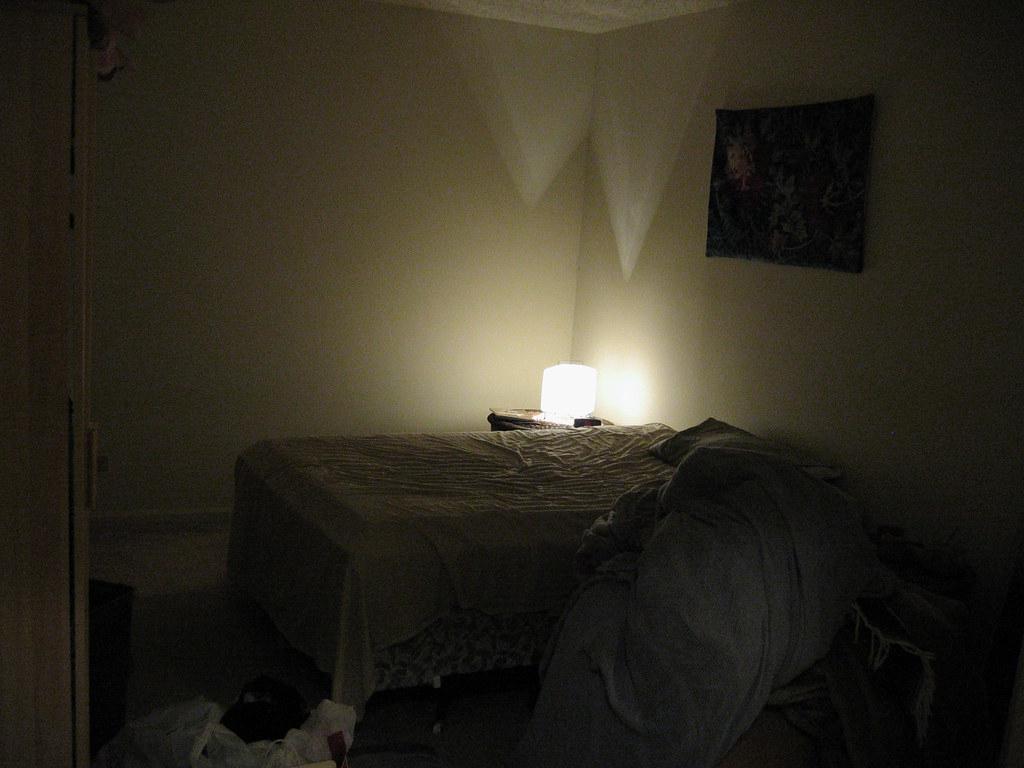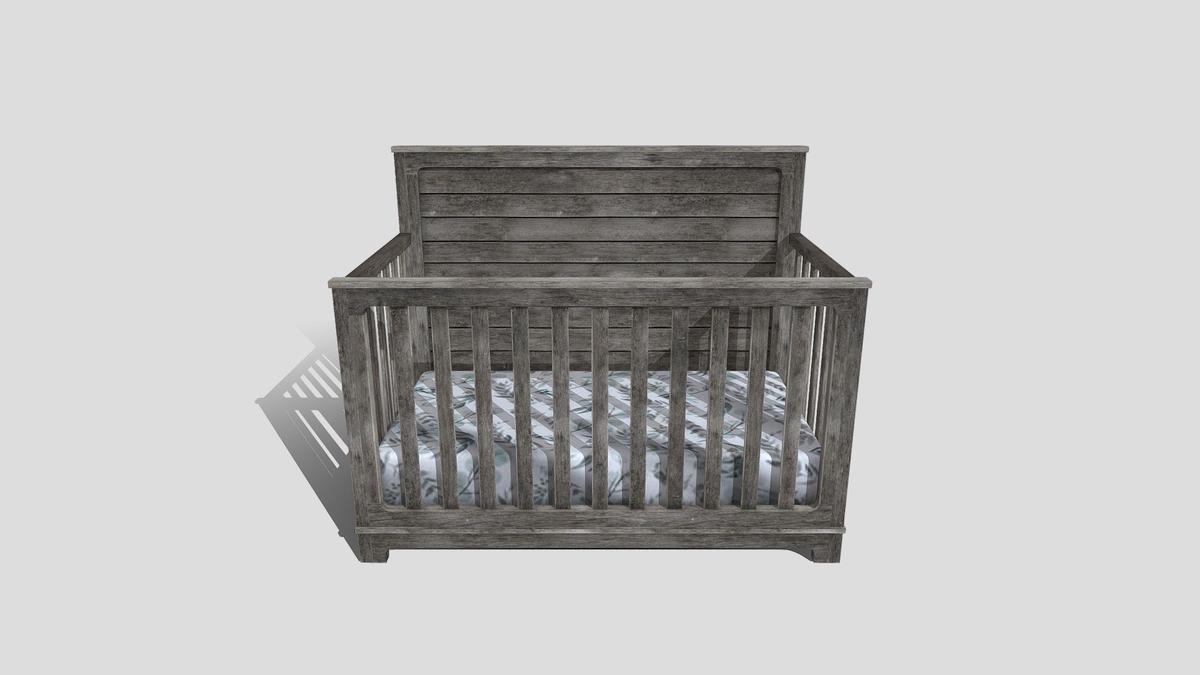Darkness
The darker the room, the better for your baby's sleep. Babies have an internal clock that regulates sleep. When it's dark, their bodies produce melatonin, the sleep hormone. Light disrupts this process, making it harder for them to rest.
Nursing at night with minimal light is crucial if you're still breastfeeding. Too much light can reinforce night waking, as your baby might associate it with daytime. A dim room helps maintain the sleepy state necessary for easily falling back to sleep.
Keeping your child's room dark until an appropriate wake-up time is another key factor. If your baby wakes up too early and sunlight streams in, they might think it's time to start the day. But with a dark room, they'll be more likely to understand that it's still sleep time.
Blackout blinds effectively eliminate light, but inexpensive options like foam board cut to fit the windows can also create a pitch-black environment, essential for high-quality sleep.

White Noise
Calming sounds like white noise can be incredibly soothing and effective for helping your baby fall and stay asleep. Babies are accustomed to a noisy environment from their time in the womb, where they were surrounded by constant sounds like your heartbeat and the whooshing of your blood flow. Introducing white noise can create a familiar and comforting soundscape that helps lull them to sleep.
White noise has the added benefit of masking other disruptive sounds in and around the house—whether it's a rambunctious toddler, loud vehicles, or even the TV in another room. This can be particularly helpful in ensuring that sudden noises don't startle your baby awake during those crucial sleep cycles.
When selecting a white noise machine or device, it's important to avoid those with lights or projections, as these can overstimulate your baby and counteract the calming effects of the noise. Look for devices that offer continuous sound without scheduled breaks, as the uninterrupted noise can help your baby self-soothe back to sleep during the night.
Keeping the volume at a safe level is also essential. Experts recommend not exceeding 50-60 decibels, comparable to the noise level of a gently running shower. Place the white noise machine across the room from the crib, rather than right beside it, to ensure it provides a comforting background hum without being too loud.
Incorporating white noise into your baby's bedtime routine can be incredibly beneficial. Continuous white noise soothes and sets the stage for consistent, restful sleep, enabling both your baby and you to enjoy a better night's sleep.

Temperature
Maintaining an optimal room temperature is critical for ensuring your baby gets the best sleep possible. Babies sleep best in room temperatures between 68-72 degrees Fahrenheit. Unlike adults, babies can't regulate their body temperature efficiently, which makes it essential to maintain a comfortable sleeping environment to help them sleep soundly and safely.
When planning how to dress your baby for sleep, it's important to consider the room's temperature. If the room is on the cooler side, you might opt for a onesie paired with a sleep sack or a wearable blanket. On warmer nights, a lighter pajama set might be more appropriate. Always avoid loose blankets in the crib, as these can be hazardous. A snugly fitted sleep sack ensures your baby stays warm without the risks associated with loose bedding.
To help maintain the ideal temperature, you can use air conditioning units or fans. These can be particularly useful during the warmer months and the hottest parts of the day. Keeping the room dark during these hours can also contribute to a cooler environment, as direct sunlight can quickly raise the room's temperature.
While managing room temperature, remember that too warm an environment can increase the risk of sudden infant death syndrome (SIDS). Thus, it's best to consistently check your baby's temperature by feeling their chest or back—not their hands or feet, as these can often feel cooler than the baby's core temperature. Your baby should feel comfortably warm, not hot or sweaty. If you feel their back or chest is too hot, it's a sign to either remove a layer of clothing or adjust the room's temperature to a cooler setting.

Sleep Space
Another critical aspect is ensuring your baby's sleep space is firm, flat, and uncluttered. An optimal sleep surface plays a vital role in both safety and sleep quality, supporting your baby's developing body and minimizing potential hazards.
Choose a crib with a firm mattress that fits snugly within the frame, providing a flat and stable surface for your baby. A firm mattress helps reduce the risk of sudden infant death syndrome (SIDS), as a softer surface can increase the likelihood of suffocation. Use a snugly fitted sheet designed specifically for the crib mattress. Ill-fitting sheets can come loose and create a dangerous situation where your baby could become entangled.
Avoid placing any loose items in the crib, such as blankets, toys, or pillows. Loose blankets can cover your baby's face, leading to suffocation, while toys and pillows can similarly contribute to unsafe sleep conditions. Instead, use a sleep sack or wearable blanket, which provides warmth without the risks associated with loose bedding.
Ensuring a smoke-free environment is another key factor. Exposure to secondhand smoke increases the risk of SIDS and other respiratory problems. Make sure your baby's sleep area is, without question, a non-smoking zone.
Adhere to the crib's weight and height restrictions as recommended by the manufacturer. These guidelines are in place to ensure the crib remains a safe environment as your baby grows. When your baby reaches the prescribed limits, it's time to transition to a different sleep setup, such as a toddler bed.
Maintain a clutter-free zone around the crib. Ensure no cords, plants, or other objects are within your baby's reach. Cords from blinds or electronics can pose strangulation hazards, while other objects might tempt your little explorer to reach out, leading to potential harm or distraction during sleep.
By focusing on a firm, flat, and uncluttered sleep surface, you are establishing a foundation for safe and effective sleep habits. This clear space allows your baby to develop great sleep skills, contributing to restful nights and a peaceful environment for both your baby and the entire family.

- American Academy of Pediatrics. SIDS and other sleep-related infant deaths: Updated 2016 recommendations for a safe infant sleeping environment.
- Centers for Disease Control and Prevention. Infant Sleep Safety.
- Moon RY, Darnall RA, Goodstein MH, et al. SIDS and other sleep-related infant deaths: Updated 2016 recommendations for a safe infant sleeping environment. Pediatrics. 2016;138(5):e20162938.
Leave a Reply